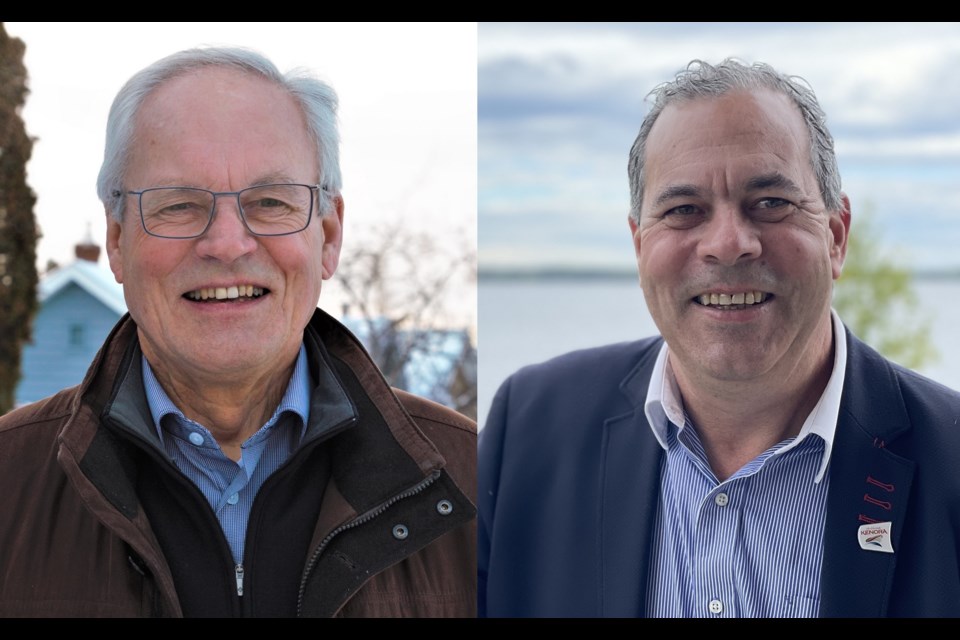The mayors of Sioux Lookout and Kenora say they are figuring out the next steps after the Northwestern Health Unit released a study on Thursday indicating supervised consumption services would benefit those two communities, as well as Dryden and Fort Frances.
Sioux Lookout Mayor Doug Lawrance said it's wonderful to see a progressive report on something that needs to be addressed.
Lawrance said the municipality has no formalized process for what might come next, but he pointed to the health unit’s willingness to work with partner agencies in each of the four communities.
“In Sioux Lookout, to see what how this might advance now the report is out [and] partner agencies have it, it's a matter of seeing who steps up,” he said, noting the complexity would cut across different sectors and organizations. “This is really part of health care. The report deals with population health and that's the job of the public health unit. And then when you get down to the individual delivery of health care, and you need an agency who steps up that has the capacity to do such things.
"I know that there are agencies who would love to do something, but they're already doing so much. They may not have the capacity or the physical capacity to step up. It may take multiple partners to have something come to the fore here.”
“It's interesting, it's a bit of a fuzzy path forward but, we just have to wait and see where it goes,” said Lawrence adding his municipality may act as a facilitator.
“We may bring it to our community safety and well-being table or the healthy community task force table."
Kenora Mayor Andrew Poirier said his council has had very limited time to discuss the report.
“We are going to carve out some time to go through it ourselves and discuss the recommendations and findings specific to Kenora. We're kind of in the early stages of having that discussion,” he said.
“It's something that's going to be ongoing for us, how we fit into this. We're not sure yet because we're not sure who would be operating it [if it were to happen].”
Poirier said the report detailed the need to continue to educate people and the benefits.
“There are some misconceptions out there,” he said. “I was pleasantly surprised to see that in the report when I read it the first time that they are going to take into consideration to location how it fits in with other services, which I was happy to hear [it is] not necessarily just as a stand-alone operation.”
“There'll be more discussion about this topic going forward, because it's an important hot button issue right now amongst not only Kenora but several other communities,” he said, adding he’s looking forward to speaking with leaders in the other communities to hear their thoughts about the recommendation from the health unit.
At the media conference launching the report on Thursday, Dr. Kit Young Hoon, medical officer of health at the health unit, said the next step is to take the report to appropriate tables and committees in each community.
“So within each of the four communities, there are existing committees, groups, partnerships with that brings together the appropriate stakeholders to discuss the reports and figure out how best to move forward with the recommendations,” she said. “From that point, hopefully, there will be a clearer identification of who would be the best lead agency or collaborative group of lead agencies together, working to move the program forward.”
Young Hoon said the next step after that would be to develop the plan for such a program.
“So things you need to of course: identify a site and be able to obtain that site for services, you need to identify what other services are going to be provided along with that site. So often it includes other health care services, treatment, services, mental health, and addiction services, counselling, and social services,” she said. “You also need to, of course, identify things like funding, staffing, policies and procedures, roles and responsibilities.”
Young Hoon said quite a few things need to be sorted out before you can actually even apply [for funding] and then you apply for a federal exemption in order to run the site.
“So a fair bit of work still yet to be done. And, and that would be done locally on each of the four communities,” she said.
When asked if the health unit could be the organization to run a supervised consumption program, Young Hoon answered that looking at other provincial programs, there are often more appropriate agencies that run the programs and not usually the local health unit.
“I would say the same as for Northwestern Health Unit’s catchment area, there are more appropriate agencies that have a better connection with the target population whose operations lend more to that sort of one-on-one individual clinical service,” she said.
"I don't believe this is best led by Northwestern Health Unit. But at the same time, I think that's a discussion with stakeholders to see what is the best process, what is the best way to serve this affected population, this very vulnerable population, so that they can be supported to lead a healthier life and hopefully eventually manage their addiction in an effective way.”
Young Hoon said with the current drug crisis, it is necessary to take action as soon as possible.
“I think in the end we can't wait for a perfect system in order to implement harm reduction services,” she said. “This is about saving lives and preventing deaths that are occurring right now.”
